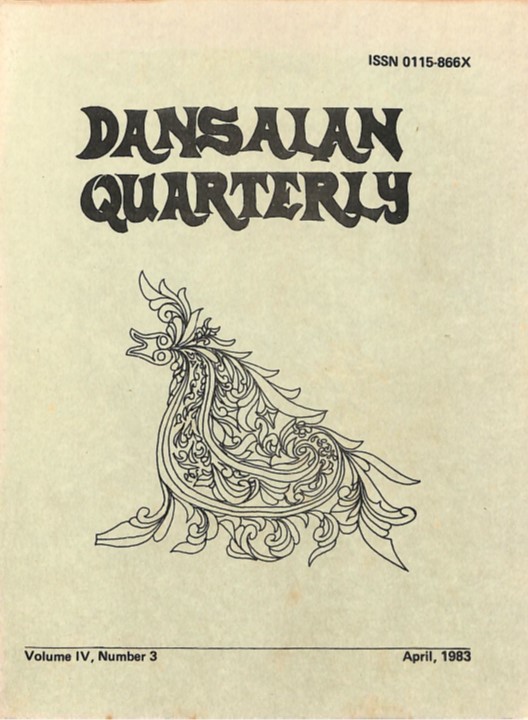April 1983 Vol. IV, No. 3
10 July 2022 Dansalan Quarterly
Cultures are passed on through people and historical narratives like the Dansalan Quarterly are what preserve them. Washburn’s and Mednick’s records provide a glimpse on how the Muslims lived through various traditions and how they kept them intact all these years. Washburn’s account tells the story of Hadju Jemila, a Muslim woman, born in a small village called Caloocan on the shore of Lake Lanao in the southern Philippines. She is known for a lot of things: as a mediator of disputes, an arranger of marriages, an orator, a musician, and a balladeer. Jemila was a biological mother to a physicist, but she also treated Washburn, the author, like her own daughter. Washburn shares the life of Jemila through her own lenses–how Islam had made an impact on her ways of doing and thinking and how music echoed throughout her life. Jemila is the very epitome of how rich Mindanaoan history is. Mednick’s “The Ilanon of Mindanao” is another example of how people serve an impactful role in preserving traditions. His account contributes to the growing literature regarding the Ilanons, a popular group in Muslim Mindanao. It shares their linguistic affiliations, some demographic trends, their rich history, among many other things. Mednick also elucidates their means of livelihood, their settlement patterns, and how social ties remain of transcendental importance in their culture. The article also tackles Ilanon community organization, and the power structures it follows. Both articles illustrate the rich cultures and traditions of people from Mindanao, woven to the personal narratives of Hadji and the Ilanons. These accounts help keep these cultures and traditions intact even after decades of formidable challenges and threats.
Please email dansalan.quarterly@dcfi.edu.ph to request a copy of the issue.

